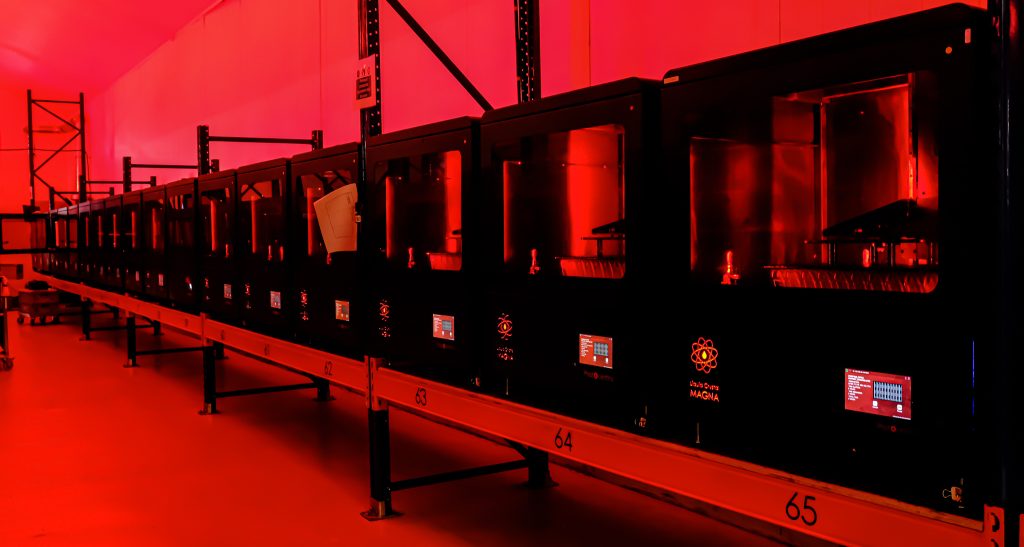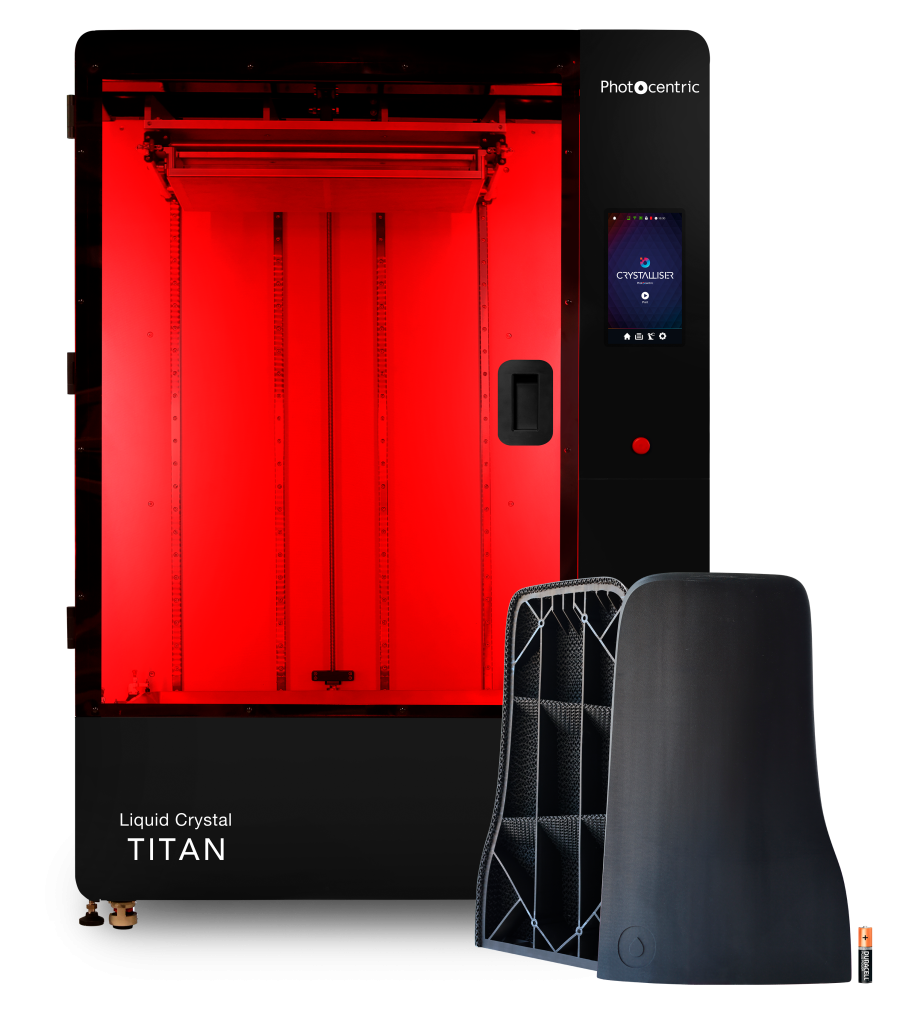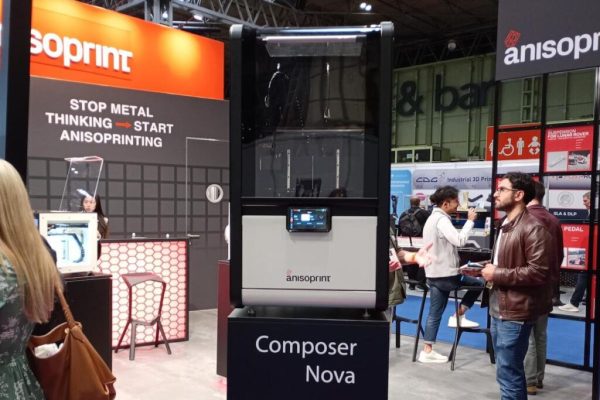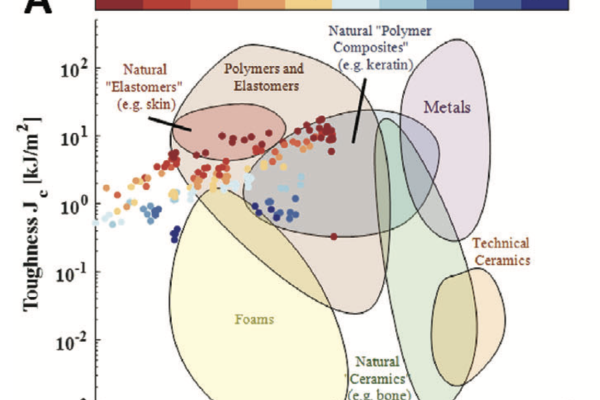Resin-based 3D printing is a robust segment in the additive manufacturing world, but it wasn’t always this way, according to Paul Holt, founder and managing director of Photocentric. In an exclusive interview with 3D Printing Industry, Holt shared his unique insights about the industry’s evolution, Photocentric’s cutting-edge technology, and the changing competitive landscape.
Resin is “the obvious way that mass manufacturing will work,” says Holt.
The outdated notions about resin 3D printing, as an “ephemeral manufacturing technique” bound to be discarded after a few uses, are no longer valid. “The initial concepts, or whatever lies that were propagated about thermosets, were down to the fact that the mechanisms of manufacture didn’t live through post-care, and the formulations were not resilient enough.”
With technological advancements, resin is proving its validity as a manufacturing material, capable of enduring long past its thermoplastic counterparts, Holt states.
‘Post care’ or post-processing refers to the methods undertaken after 3D printing, including curing and finishing techniques to stabilize the object. ‘Thermoplastics’ are a type of plastic polymer that becomes moldable at a certain elevated temperature and solidifies upon cooling, typically used in FDM 3D printing.
Interestingly, Holt pointed out a prevalent paranoia regarding the long-term effects of resin, particularly if ingested. This misconception, he argued, is unfounded. He elaborated with the example of dental fillings, a commonly accepted application for daylight photocurable compounds similar to those used in resin 3D printing. And it is not uncommon for a filing to come loose and be swallowed by the wearer. The point? The fear around resin stems more from unfamiliarity and a lack of precedent than any solid scientific evidence, with UDMA / TEGDMA widely used in the dental industry.
Photocentric’s evolving approach: how do you get from stamps to 3D printing?
“Photocentric is unique in both its ability to be successful, and fail, in that it only sells products that it makes and invents,” says Holt.
Founded in 2002, Photocentric initially focused on a product to facilitate stamp-making, inventing unique photopolymers, fast photopolymers, and a method for encoding these polymers using LCD screens. Gradually, their research led to multi-layer image creation, opening the door to 3D printing.
According to Holt, two significant craft-related inventions led the company to experiment with 3D printing. First, they developed very fast polymers. Then, they created autonomous machinery to process the large volume of polymers they used for craft purposes. These advances helped them build their first 3D printer and start their journey in additive manufacturing.
In retrospect, the path taken by Photocentric might have looked “completely illogical,” perhaps even calling to mind the old joke about how to get from one place to another, ‘if were you, I wouldn’t start from here.’ With hindsight, Holt says the route makes complete sense; indeed, there are many parallels between craft and 3D printing industries.
“It’s a lot more successful (copying) people’s proven models,” he said, pointing to Apple’s history of improving existing products and the risk first movers have when marketing a genuinely new product.
Breaking the Battery Mold with Additive Manufacturing: Photocentric’s Vision
Unafraid to forge its own path, Photocentric’s research into 3D printed batteries exemplifies this vision. Holt highlighted the potential game-changer of creating three-dimensional batteries that can be molded into any shape and achieve far greater interfacial contact. However, he stressed that any innovation in this space must meet two core criteria: they must be cheap and producible in large quantities. Any technology that fails to meet these conditions is, as Holt puts it, “dead on arrival.”
“Batteries are essentially made by coating two faces with a slurry, one with lithium, the other with carbon. You push them together with a separator and roll them up, increasing the charge interface area,” says Holt.
Think of it as painting two faces on a piece of paper, then rolling it into a cylinder – the ‘charge interface area’ he talks about is similar to the paper’s surface area. The larger this area, the more charge the battery can hold and the quicker it can discharge or recharge. It’s an effective but two-dimensional solution to a three-dimensional problem.
“If you look at batteries in three dimensions, you realize you’re not limited to just increasing the area. You could take advantage of the whole volume, creating new shapes such as interconnected egg boxes, columns, or undulating hills and valleys. The entire contour area becomes a palette for design, changing according to whether you want quick charging, quick discharging, or holding a lot of current,” Holt elaborates.
3D printing allows experimentation with thicker electrodes, which offer significant advantages but have always been tricky to dry efficiently using conventional processes. Breaking away from the restrictions of traditional manufacturing processes, additive manufacturing could facilitate completely new types of batteries, potentially creating a game-changing opportunity in the industry.
Holt’s ambition does not stop at product innovation. He envisions a future where the entire manufacturing process is automated, from digital file input to packaged output. Dubbed “Project Jeni”, this initiative is Photocentric’s main focus and, as Holt predicts, the “biggest single project” he’ll work on in his lifetime.
The project stemmed from the firm’s experience during COVID of high volume manufacturing and the valuable lessons it taught. Holt quips, “As you scale it, you just get more people in, and then you’ve got more problems.” In other words, increasing the scale of production might amplify human-dependent issues, an inherent challenge in the 3D printing sector.
Holt acknowledges that the journey to this future won’t be smooth. There are numerous small challenges and uncertainties to navigate, and it’s important to realize that there isn’t a one-size-fits-all solution for every product. Yet, the potential benefits of fully automated, high-volume, low-cost manufacturing are so profound that the endeavor is undeniably worth it. Holt’s vision for Photocentric is nothing short of a revolution in resin 3D printing, redefining the future of manufacturing.

From the invention of LCD 3D Printing to selling millions of machines
Photocentric is known for its groundbreaking invention of LCD 3D printing. “It’s really hard to remember what the world was like before LCD. These processes were so well established that it seemed like there was no alternative,” says Holt. Despite initial skepticism, LCD 3D printing has since proven to be a huge enabler, launching numerous new machines onto the market and becoming one of the most significant disruptive influences in the past five years.
In a bustling global 3D printing market teeming with new competitors, Photocentric finds itself in a unique position, carving out its niche by thinking differently about scale and utility.
“What sets us apart?” Holt reflected during our conversation, “It’s our focus on large format printers and high-volume production of smaller parts.”
As Chinese manufacturers grow the market with low-cost, smaller format printers, Photocentric has repositioned itself in a different sphere. This isn’t to say that they scorn these competitors; on the contrary, Holt applauds them, stating that their contributions to the market have set an impressive bar for value in 3D printing. They have optimized Photocentric’s initial concepts and given rise to a thriving ecosystem of affordable, readily accessible hardware.
“(They) provide the best value in 3D printing,” Holt observed, “Their products are amazing machines, being sold to millions each year.”
Photocentric’s strategy has evolved in two distinct directions: very large format printing and mass production of small parts. As Holt said, “Why not create very large objects or arrays of very small ones where you need to produce a lot?”
Regarding intellectual property (IP), Photocentric’s approach is unconventional. Holt views patenting less as a mechanism for blocking competitors and more as a means to safeguard the company’s freedom to operate. “The commercial benefit of having a patent isn’t completely obvious to the uninitiated,” he said, indicating a shift in perspective from the number of patents towards meaningful innovation and practical application.
Noting the limitations and challenges of enforcing patents, Holt argued that the focus should be on innovating for the market. “All we want to do is be able to go and commercialize our products if we can invent them and the marketplace wants them. We just want not to be stopped.”
In the face of heightened competition, Photocentric remains steadfast, continuing to innovate and push boundaries, whether in large-format 3D printing or high-volume production of smaller parts. It sees the competitive landscape as a field of opportunity and not a lion’s pit. For them, it’s not just about surviving in the industry; it’s about shaping it.

Growing the additive manufacturing market with transparency
Photocentric has been transparent about the costs associated with 3D printing, incorporating the cost of the machine, materials, and associated costs like waste disposal and energy into the total cost of ownership. They see this transparency as crucial for companies aiming to produce parts on a large scale.
When asked about the company’s impressive growth from a turnover of £10 million in 2019 to £16.5 million in 2021, Holt remains humble. “We’re sitting in an industry that posts regular articles claiming a CAGR of 25%. So anyone who’s sub 25% is shrinking,” he says. He believes the real growth will come from changing how things are manufactured, not merely adding a new 3D printer to the market.
Unmasking the invisible million-part 3D printing production runs
3D printing one million parts is a brazen headline-grabbing statement. Yet the public mentions of such high-volume additive manufacturing successes remain sparse.
Photocentric has a hand in two of the more widely known ones, both addressing supply chain issues. Photocentric produced a monthly volume of one million 3D printed face shields for the UK’s NHS, a project that earned Holt an MBE in the New Year’s Honors list. The PPE equipment was produced using 45 Magna 3D printers.
Another substantial production run was the 3D printing of hangers to keep their epoxy cartridges and mixing nozzles together by Merit3D and Adhesives Technology. The compelling aspect of this project wasn’t the product itself but the cost, necessity, and disruptive influence of this “B plan” 3D printing approach. 3D printing became the fallback plan when traditional manufacturing routes were blocked.
I asked Holt where the other million-part production runs in the 3D printing industry are. His response is slyly cryptic. “All in the places that you don’t look,” he says. The crux of his argument is that this kind of mass manufacturing is not happening at the fore of industry; it’s not on display at trade shows; it’s happening behind the scenes, often involving parts that would generally be considered “boring.”
Essentially, unassuming, often overlooked components are being 3D printed in large volumes and, in doing so, are causing a quiet revolution in the manufacturing industry. However, companies are highly protective of this information due to its disruptive nature.
Holt also addressed the issue of functional properties in 3D printing materials. Working with BASF, the world’s largest chemical company, Photocentric aims to commoditize photocurable compounds to replace traditional materials used in injection molding. The challenge? Ensuring these new materials function as effectively as the plastics we use.
The process is not without its hurdles. The demands of manufacturing, the need for cost-effectiveness, and the requirement for functional parts all coalesce to form a formidable challenge for 3D printing to overcome.
The future of Photocentric and the 3D printing industry
Photocentric’s managing director is already preparing for the company’s future five years down the road. Their short-term plan involves the rollout of unique printers that challenge the status quo, with their first offering being the Titan. It’s more than a large-format printer; Holt refers to it as a game-changer in terms of cost and productivity.
“We’re interested in very large format printers for particular companies that want to get better value out of going and making very large parts and to do them to make functional large parts cost-effectively. That is a different statement to what most large format printers are offering.”
However, Holt’s five-year vision is even more ambitious. He expects digital mass manufacturing to become the norm among industries worldwide. Producing millions of parts monthly, customizable to whatever extent is needed, with no limit. This production paradigm, Holt argues, is transformative not just for manufacturing but for the environment as well, as every part is accounted for in terms of its carbon footprint.
Holt likened this expected shift in manufacturing to how AI was first perceived as “freaky” before being universally accepted. Similarly, he predicts that digital mass manufacturing will be widely adopted by companies looking to reduce their carbon footprint in five years.
In response to questions regarding the recent M&A activities in the 3D printing industry, particularly the Stratasys and Desktop Metal merger, Holt sees it as more of a strategy to clear the competitive landscape than to enhance user experience.
When asked about Photocentric’s potential M&A considerations, Holt maintains a clear vision for the company’s independence. “We’re like burrowing away on our own, comfortably heading for the gold vein that’s in the hills,” he said. He believes in the superiority of their interconnected LCD method of part manufacturing and remains confident that Photocentric can address any challenges internally without needing an external partner to complete their jigsaw puzzle.
Wrapping up, Holt reveals that the true motivation behind his ambitious plans for Photocentric isn’t simply to produce products. He sees 3D printing as merely a means to an end – a technology that enables them to offer a credible alternative to worldwide manufacturing. For him, the real game changer is the profound impact of this shift on a global scale.
Photocentric seems to be treading a path few have walked before. Their vision of 3D printing is less about the technology and more about the transformative potential of mass manufacturing. One thing’s for certain: they’re a company to watch closely in the coming years.
Read more in our Executive Interview series here:
Peter Hansford, CRO at Wayland Additive, solving a 20-year problem
Alloy Enterprises CEO Ali Forsyth, metal additive manufacturing and disruption
Katie Snediker, CEO Jett3D, finding a profitable niche in 3D printing
Paul Powers, founder of Thangs and Physna, on transforming the 3D design file-sharing market
Nadav Goshen, CEO of UltiMaker on Thingiverse, AI tools and a message to the 3D printing community
What does the future of 3D printing hold?
What engineering challenges must be tackled in the additive manufacturing sector in the coming decade?
To stay up to date with the latest 3D printing news, don’t forget to subscribe to the 3D Printing Industry newsletter or follow us on Twitter, or like our page on Facebook.
While you’re here, why not subscribe to our Youtube channel? Featuring discussion, debriefs, video shorts, and webinar replays.Are you looking for a job in the additive manufacturing industry? Visit 3D Printing Jobs for a selection of roles in the industry.
Featured image shows Paul Holt, Photocentric Founder and Managing Director. Photo via Photocentric.
منبع: https://3dprintingindustry.com/news/interview-photocentric-founder-paul-holt-unmasking-the-invisible-million-part-3d-printing-production-runs-222494/?utm_source=rss&utm_medium=rss&utm_campaign=interview-photocentric-founder-paul-holt-unmasking-the-invisible-million-part-3d-printing-production-runs

